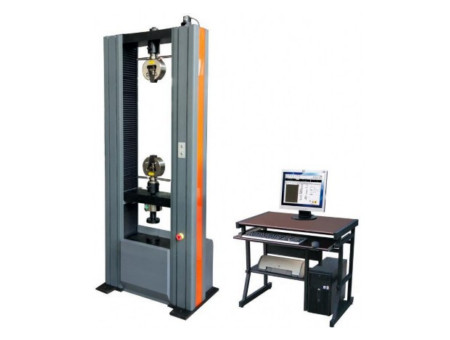-
ASTM D412 Tensile Strength of Rubber
Edited by:Read:ASTM D412 is a standard test method issued by the American Society for Testing and Materials (ASTM) that is used to determine the tensile strength and elongation of rubber materials. This test method is applicable to both vulcanized and thermoplastic rubber.
1. What is the tensile strength test?
Tensile strength is the maximum tensile stress or force that the tested sample can withstand before breaking. The tensile strength test is used to measure a material’s tensile strength resistance ability. It is a very useful test to know material properties.
2. ASTM D412 Tensile strength test standard for rubber and elastomers
ASTM D412 tests samples in the shape of dumbbells, rings, or straight pieces of uniform cross-sectional area. It tends to measure rubber/elastomer tensile stress, tensile stress at a given elongation, tensile strength, yield point, and ultimate elongation. ASTM D412 contains 2 kinds of test methods. Method A for dumbbell and straight shape sample; Method B for ring shape sample. Both test methods need a universal testing machine to perform the test. And its test samples should not be prestressed.

3. Requirement for tensile strength tester(UTM) of ASTM D412
1) Constant rate of extension type(CRE)
2) Speed 500±50mm/min(20±2 in./min)
3) Extensometer
4) Suitable grip
Check the recommended tensile strength tester
The procedure of the ASTM D412 test method involves the following steps:
1. Sample Preparation: Prepare dumbbell-shaped specimens from the rubber material according to the specified dimensions and shape requirements outlined in the standard.
2. Test Setup: Mount the prepared specimen securely between the grips of a universal testing machine, ensuring proper alignment and grip separation. The grips should be appropriate for the material and provide a uniform distribution of the applied load.
3. Preconditioning: If required, precondition the sample specimens under specified temperature and humidity conditions before testing.
4. Test Execution: Start the testing machine and exert a constant speed tensile force on the specimen until it breaks. The machine should record the force and elongation data continuously throughout the test.
5. Data Analysis: Calculate the tensile strength, elongation, and other relevant mechanical properties using the recorded force and elongation data. Tensile strength is typically determined by dividing the maximum force applied to the specimen at rupture by the original cross-sectional area of the specimen.
It's important to note that the specific details, parameters, and calculations may vary depending on the rubber material, testing equipment, and other factors. Therefore, it is recommended to refer to the complete ASTM D412 standard for the detailed procedure, specific test conditions, calculations, and any additional requirements related to the tensile strength testing of rubber materials.
- 2024-04-19Paper ring compression strength tester standards
- 2024-04-19Cupping tester standards
- 2024-04-19Rubber and plastic tensile tester standards
- 2024-04-19Taber 1750 wear-resistant tester standards
- 2024-04-19Stone Chip Resistance Gravelometer standards
- 2024-04-18Diaper absorption speed tester standards
- 2024-04-18Diaper leakage tester technical indicators
- 2024-04-18Paint film impact resistance tester standards
- 2024-04-18Low temperature brittleness tester principle
- 2024-04-18Battery separator permeability tester technical indicators



